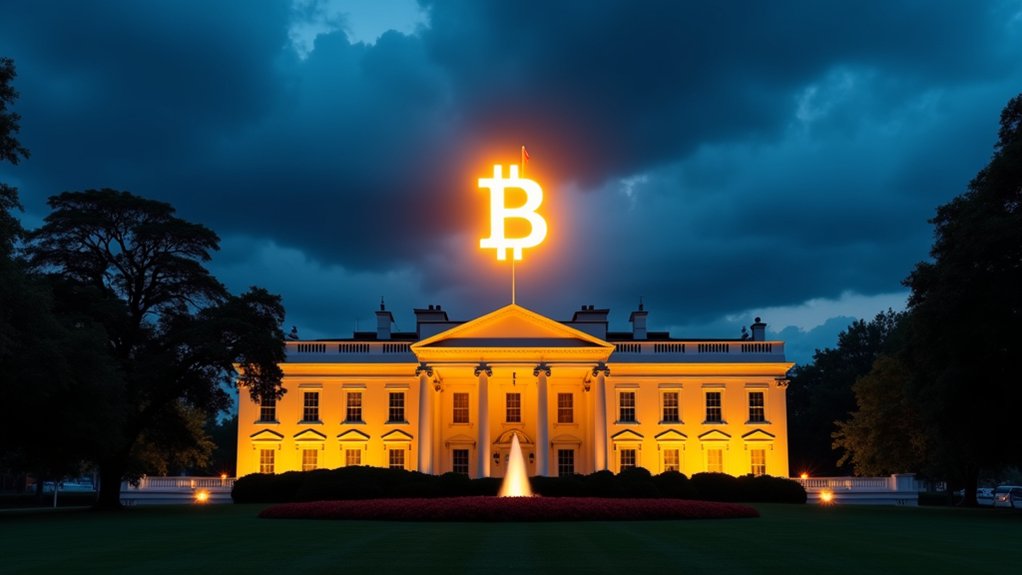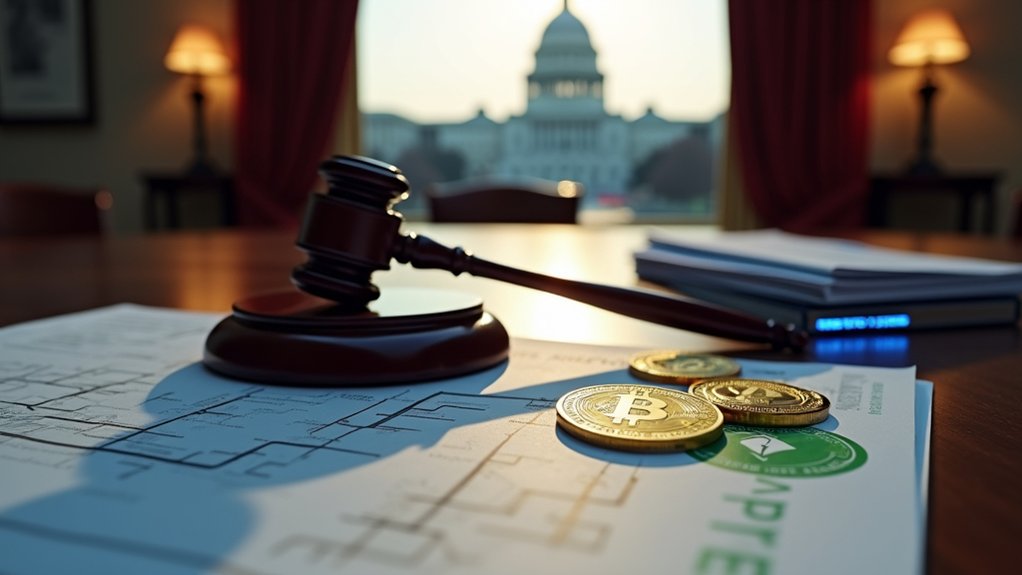The White House just dropped a Bitcoin bomb. In a move that’s both shocking and oddly on-brand for the Trump administration, the government announced plans to build a Strategic Bitcoin Reserve using profits from tariffs and gold sales. Not taxpayer money. Just straight-up leveraging what Uncle Sam already has.
The Bitcoin Act of 2025, introduced by Senator Cynthia Lummis, lays out an ambitious five-year plan to snag one million Bitcoins—roughly 5% of all Bitcoin that’ll ever exist. That’s not small potatoes. We’re talking about 200,000 BTC per year, funded by non-taxpayer sources. The initial reserve will include $17 billion worth of Bitcoin already seized from criminals. Talk about making lemonade from lemons.
Uncle Sam’s going crypto: A million Bitcoin buying spree backed by seized assets and non-taxpayer funds reshapes America’s digital future.
Bo Hines and his advisers have proposed this budget-neutral approach to ensure the plan’s financial sustainability. The whole thing feels like a plot twist in a tech thriller, but it’s real. The administration is treating Bitcoin like digital gold, planning to hold it long-term rather than flip it for quick profits. They’re even talking about selling Federal Reserve gold certificates to fund this crypto shopping spree. Bold? Yes. Bizarre? Maybe. The move aims to maintain dollar dominance in an increasingly digital economy.
Critics aren’t buying it—literally or figuratively. They’re pointing fingers at the lack of transparency and wondering if this is just a fancy way to manipulate markets or pay back political favors. There’s also the tiny detail of how exactly the government plans to manage billions in volatile digital assets. Large-cap cryptocurrencies tend to offer more stability and lower risk compared to smaller alternatives. Nobody seems to have those answers yet.
The market implications are massive. Picture the U.S. government showing up to Bitcoin exchanges like a whale with deep pockets. This could send prices on a roller coaster ride and might convince other countries to jump on the bandwagon. It’s either brilliant or bonkers, depending on who you ask.
Is this a new era of fiscal policy or just another headline-grabbing move? The administration claims it’s positioning America for leadership in the digital economy. But with so many questions and so few details, we’re all just watching this experiment unfold in real-time. Welcome to 2025, folks.





